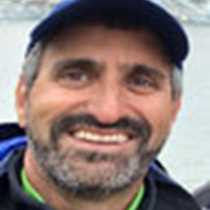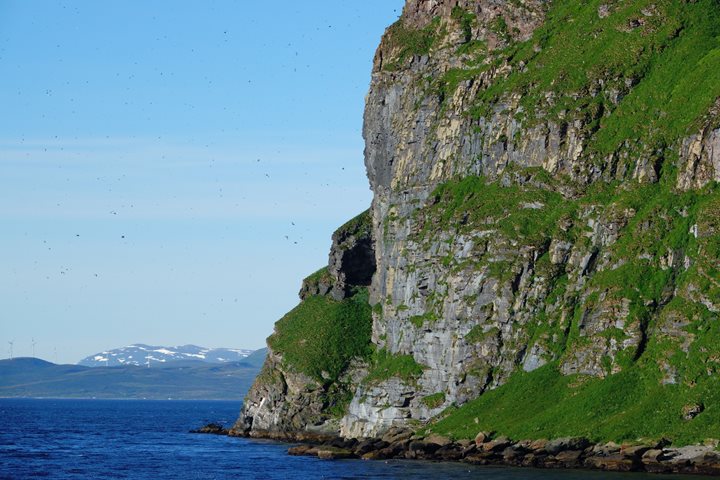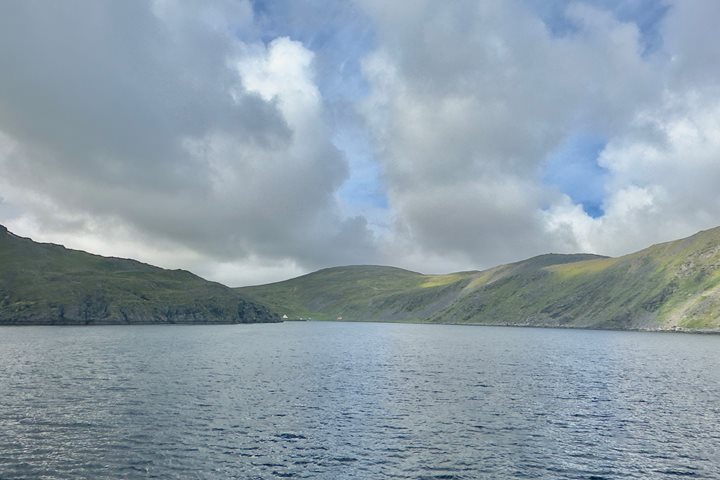The sun didn’t rise this morning, as it had never set the night before, just doing its loops in the sky during this midnight sun time of year. We steamed north through the ‘night’ from Svalbard’s southern outpost isle of Bear Island. We visited the island yesterday to admire its cliffs of guillemots and the easy cod fishing. National Geographic Endurance navigated into Svalbard proper, arriving at the lower reaches of Hinlopen Strait by midmorning.
National Geographic photographer Michael George inspired us with engaging anecdotes from his burgeoning career in photographic storytelling, before being graciously interrupted by expedition leader Lucho Verdesoto’s announcement of a sighting of polar bears. A mother bear and her two first-year cubs were wandering the rocky ridge of Friesøya, a very small island in the small Wahlberg archipelago. Without any sea ice in the area from which to seek ringed seal sustenance, the mother didn’t have much choice but to forage for seabird eggs or take her cubs for a swim. We enjoyed a peek into the lives of these beginner bears in the care of their mom. They engaged in rock climbing, egg-hunting, and lounging in snowbanks before the trio of arctic icons took to the water to hopefully find more nourishing environs.
A second polar bear sighting was made on the southwest side of icy Nordaustlandet. A mother bear and her second-year cub were navigating the rocky bluffs above an icy beach. Mom spread out on a snowbank for a while as the cub seemed to be seeking eggs of arctic terns that flew over the pair in alarm. This mother was sporting a bright white radio collar; her capture, measurements, and tracking are important parts of polar bear conservation in Svalbard. Since male bears have such large, thick necks relative to the size of their heads, only females can be collared.
After the agreeable bear-watching detour, we reached our intended afternoon destination at Torellneset on Nordaustlandet, a traditional haul out site for walruses. Walking from our landing site along the berm above the beach, we quietly approached a group of walruses piled up together on a sandy point of land. Pairs of tusks occasionally rose from the brown blubbery mass of the behemoths. Small groups of these big pinnipeds swam the shoreline. With big bodies, small heads, dexterous vibrissae, and impressive dentition, the common name in combination with the scientific name, Odobenus rosmarus, for these whimsical arctic creatures can be very loosely translated to ‘tooth-walking pink whale-horse of the sea.’
We enjoyed sharing our first day in the High Arctic with two of its most mythical representatives, the polar bear and the walrus, as we continue our exploration of Arctic Norway.







